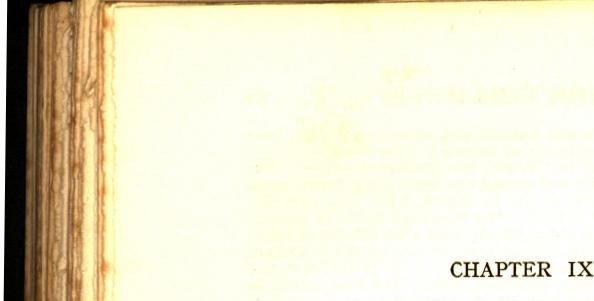INTELLIGENT and picturesque, workmanlike and affectionate, the Old English Sheepdog combines, in his shaggy person, the attributes at once of a drover's drudge and of an ideal companion. Although the modern dog is seen less often than of old performing his legitimate duties as a shepherd dog, there is no ground whatever for supposing that he is a whit less sagacious than the mongrels which have largely supplanted him. The instincts of the race remain unchanged ; but the mongrel certainly comes cheaper.
Carefully handled in his youth, the bob-tail is unequalled as a stock dog, and he is equally at home and efficient in charge of sheep, of cattle, and of New Forest ponies. So deep-rooted is the natural herding instinct of the breed that it is a thousand pities that the modern shepherd so frequently puts up with an inferior animal in place of the genuine article.
Nor is it as a shepherd dog alone that the bob-tail shines in the field. His qualifications as a sporting dog are excellent, and he makes a capital retriever, being usually under excellent control, generally light-mouthed, and taking very readily to water. His natural inclination to remain at his master's heel and his exceptional sagacity and quickness of perception will speedily develop him, in a sportsman's hands, into a first-rate dog to shoot over.
These points in his favour should never be lost sight of, because his increasing popularity on the show bench is apt to mislead many of his admirers into the belief that he is an ornamental rather than a utility dog. Nothing could .be
6o
THE OLD ENGLISH SHEEPDOG 61
further from the fact. Nevertheless, he has few equals as a house dog, being naturally cleanly in his habits, affectionate in his disposition, an admirable watch, and an extraordinarily adaptable companion.
As to his origin, there is considerable conflict of opinion, owing to the natural difficulty of tracing him back to that period when the dog-fancier, as he flourishes to-day, was all unknown, and the voluminous records of a watchful Kennel Club were still undreamed of. From time immemorial a sheepdog, of one kind or another, has presided over the welfare of flocks and herds in every land. Probably, in an age less peaceable than ours, this canine guardian was called upon, in addition to his other duties, to protect his charges from wolves and bears and other marauders. In that case it is very possible that the early progenitors of the breed were built upon a larger and more massive scale than is the sheepdog of today.
The herd dogs of foreign countries, such as the Calabrian of the Pyrenees, the Himalayan drover's dog, and the Russian Owtchah, are all of them massive and powerful animals, far larger and fiercer than our own, though each of them, and notably the Owtchah, has many points in common with the English bob-tail. It is quite possible that all of them may trace their origin, at some remote period, to the same ancestral strain. Indeed, it is quite open to argument that the founders of our breed, as it exists to-day, were imported into England at some far-off date when the duties of a sheepdog demanded of him fighting qualities no longer necessary.
Throughout the nineteenth century, one finds conclusive evidence that the breed was very fairly represented in many parts of England, notably in Suffolk, Hampshire, and Dorsetshire, and also in Wales. Youatt writes of it in 1845, Richardson in 1847, and " Stonehenge " in 1859. Their descriptions vary a little, though the leading characteristics are much the same, but each writer specially notes the exceptional sagacity
of the breed.
THE OLD ENGLISH SHEEPDOG

